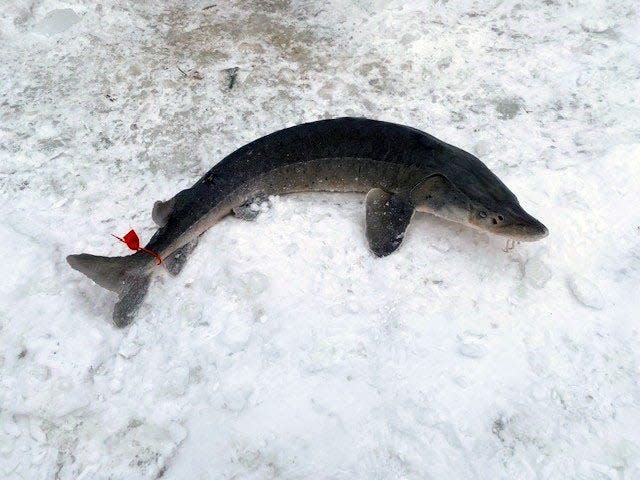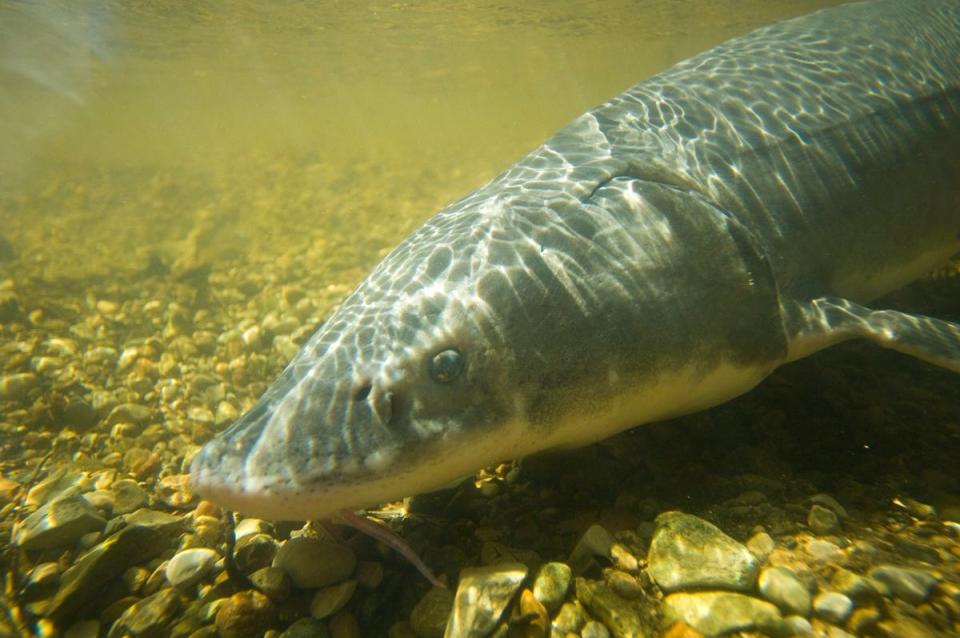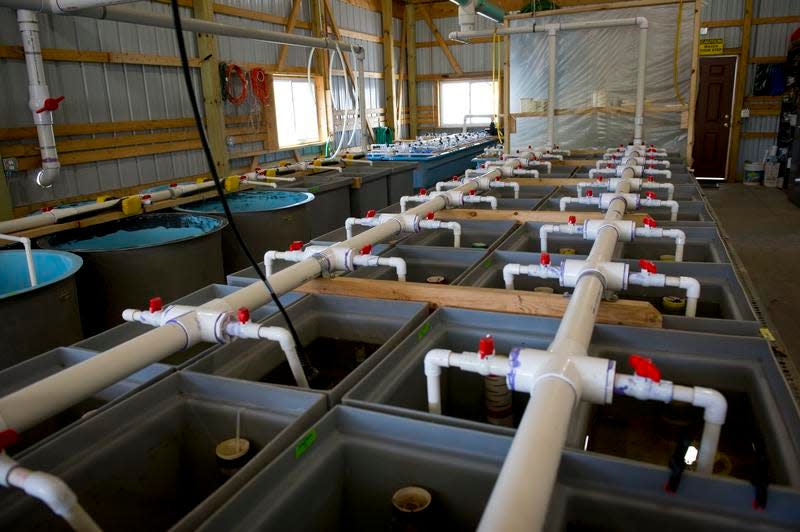Michigan's 2024 Black Lake sturgeon fishing season starts Feb. 3: What to know
Michigan's shortest fishing season starts — and most likely ends — Feb. 3.
The 2024 lake sturgeon fishing season on Black Lake in Cheboygan and Presque Isle counties begins at 8 a.m. Feb. 3, according to the Michigan Department of Natural Resources.
The season traditionally starts the first Saturday in February and runs through the following Wednesday or until the quota of six sturgeon is reached. Last year, the season lasted 65 minutes. In 2022, it was over after 36 minutes.

Black Lake anglers are allowed to harvest one lake sturgeon and the fish must be immediately reported to DNR personnel on the ice. Official registration of each harvested fish will take place at a DNR trailer located on or near the ice at the end of Zollner Road in the northwest part of Black Lake. During harvest registration, the fish's internal organs may be examined and a piece of fin tissue may be removed for DNA analysis or aging.
All anglers must register online to participate in the fishing season and anyone 17 or older must have a valid Michigan fishing license. Anyone who wants to participate must register online by Feb. 2.
Participating anglers must bring their own blaze orange or bright red flags, (1 foot in diameter or larger) to hang on highly visible locations on fishing shanties, according to the DNR. The flags must be immediately removed when the season is over.
The season closes when the sixth fish is harvested or five fish have been harvested at the end of any fishing day. Fishing hours at 8 a.m. to 2 p.m. each day of the season.
The season will end either at 2 p.m. Feb. 7 or when one of the two scenarios is met. Anglers will be notified via text message and on the ice by DNR that they must immediately stop fishing for lake sturgeon. Participants will also get text messages each time a fish is taken by an angler.
The season includes spearing and hook-and-line fishing. There's no size limit for fish caught, but the ones brought in tend to be whoppers.
Last year, the largest fish nabbed was a 55.5-inch female that weighed 35.5 pounds.
Lake sturgeon typically live about 55 years, but some over 100 years old have been found, according to the DNR.
The state record for a legally harvested lake sturgeon is 193 pounds and was taken from Mullett Lake.
Sturgeon weighing more than 300 pounds have been observed in the Great Lakes Basin.
The DNR is also warning anglers to be aware of marginal ice conditions on regional lakes this year and to be extremely cautious when fishing.
Fish fun all weekend
No matter how long the fishing season lasts, the sturgeon party goes two days with the Black Lake Sturgeon Shivaree taking place Feb. 2-3. The annual event hosted by the Black Lake Chapter of Sturgeon for Tomorrow includes live music, poker run, raffle and activities for kids at the former Black Lake Hotel located at 1701 Winifred St. in Cheboygan. The location is tentative and could be moved if the ice on Black Lake is not safe. The event's ice fishing contest has been canceled due to poor ice conditions. There's a $5 entrance fee for the event.
Sturgeon management
Lake sturgeon is one of the oldest species in the Great Lakes.
The DNR and several entities have been working to rehabilitate lake sturgeon populations in Michigan after they declined dramatically since the 1800s due to habitat loss and degradation and overfishing, according to the DNR.
The species got increased attention in 1997 when the Michigan DNR Fisheries Division completed the first iteration of the statewide rehabilitation strategy for lake sturgeon.

The population has increased in the past 20 years due to rearing and stocking efforts, research and protection of spawning adults, according to the DNR.
The species is also of cultural importance to tribes in Michigan. The fish are cooperatively managed by the state and the tribes in the 1836 Treaty territory.
In July 2023, a survey was conducted in Black Lake to evaluate the status of juvenile lake sturgeon and the success of stocking efforts. More than 400 lake sturgeon were captured during the three-week survey.
Additional surveys are planned in Cheboygan County at Mullett Lake this year and Burt Lake in 2025.

Black Lake sturgeon facility
A partnership between Michigan State University and the fisheries division that started in 2002 enabled more research on lake sturgeon.
The Black Lake sturgeon facility in Cheboygan County is centered around a stream-side research and hatchery facility. The hatchery has led to 33,416 juvenile lake sturgeon being stocked into the Cheboygan River drainage.
This article originally appeared on Detroit Free Press: 2024 Black Lake sturgeon fishing season in Michigan starts Feb. 3

